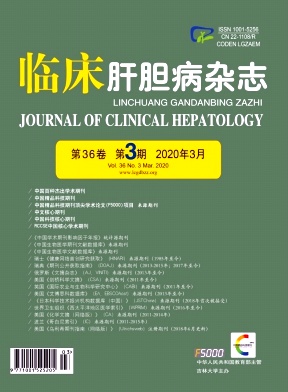|
[1] MEDINA-CALIZ I,ROBLES-DIAZ M,GARCIA-MUNOZ B,et al. Definition and risk factors for chronicity following acute idiosyncratic drug-induced liver injury[J]. J Hepatol,2016,65(3):532-542.
|
|
[2] CHANG B,LI B,HUANG A,et al. Changes of four common non-infectious liver diseases for the hospitalized patients in Beijing 302 hospital from 2002 to 2013[J]. Alcohol,2016,54:61-65.
|
|
[3] FONTANA RJ,HAYASHI PH,GU J,et al. Idiosyncratic drug-induced liver injury is associated with substantial morbidity and mortality within 6 months from onset[J]. Gastroenterology,2014,147(1):96-108,e4.
|
|
[4] CHALASANI N,FONTANA RJ,BONKOVSKY HL,et al. Causes,clinical features,and outcomes from a prospective study of drug-induced liver injury in the United States[J]. Gastroenterology,2008,135(6):1924-1934.
|
|
[5] ANDRADE RJ,LUCENA MI,KAPLOWITZ N,et al. Outcome of acute idiosyncratic drug-induced liver injury:Long-term follow-up in a hepatotoxicity registry[J]. Hepatology,2006,44(6):1581-1588.
|
|
[6] AITHAL GP,WATKINS PB,ANDRADE RJ,et al. Case definition and phenotype standardization in drug-induced liver injury[J]. Clin Pharmacol Ther,2011,89(6):806-815.
|
|
[7] Drug-Induced Liver Disease Study Group,Chinese Society of Hepatology,Chinese Medical Association. Guidelines for the management of drug-induced liver injury[J]. J Clin Hepatol,2015,31(11):1752-1769.(in Chinese)中华医学会肝病学分会药物性肝病学组.药物性肝损伤诊治指南[J].临床肝胆病杂志,2015,31(11):1752-1769.
|
|
[8] AITHAL PG,DAY CP. The natural history of histologically proved drug induced liver disease[J]. Gut,1999,44(5):731-735.
|
|
[9] BJÖRNSSON E,KALAITZAKIS E,AV KLINTEBERG V,et al.Long-term follow-up of patients with mild to moderate drug-induced liver injury[J]. Aliment Pharmacol Ther,2007,26(1):79-85.
|
|
[10] SHEN T,LIU Y,SHANG J,et al. Incidence and etiology of drug-induced liver injury in mainland China[J]. Gastroenterology,2019,156(8):2230-2241. e11.
|
|
[11] FONTANA RJ,HAYASHI PH,BARNHART H,et al. Persistent liver biochemistry abnormalities are more common in older patients and those with cholestatic drug induced liver injury[J].Am J Gastroenterol,2015,110(10):1450-1459.
|
|
[12] CHALASANI N,BONKOVSKY HL,FONTANA R,et al. Features and outcomes of 899 patients with drug-induced liver injury:The DILIN prospective study[J]. Gastroenterology,2015,148(7):1340-1352. e7.
|
|
[13] BJÖRNSSON E,DAVIDSDOTTIR L. The long-term followup after idiosyncratic drug-induced liver injury with jaundice[J]. J Hepatol,2009,50(3):511-517.
|
|
[14] FONTANA RJ,SEEFF LB,ANDRADE RJ,et al. Standardization of nomenclature and causality assessment in drug-induced liver injury:Summary of a clinical research workshop[J]. Hepatology,2010,52(2):730-742.
|
|
[15] KLEINER DE,CHALASANI NP,LEE WM,et al. Hepatic histological findings in suspected drug-induced liver injury:Systematic evaluation and clinical associations[J]. Hepatology,2014,59(2):661-670.
|
|
[16] REUBEN A,KOCH DG,LEE WM,et al. Drug-induced acute liver failure:Results of a U. S. multicenter,prospective study[J]. Hepatology,2010,52(6):2065-2076.
|
|
[17] ROBLES-DIAZ M,LUCENA MI,KAPLOWITZ N,et al. Use of Hy's law and a new composite algorithm to predict acute liver failure in patients with drug-induced liver injury[J]. Gastroenterology,2014,147(1):109-118. e5.
|
|
[18] LUCENA MI,KAPLOWITZ N,HALLAL H,et al. Recurrent druginduced liver injury(DILI)with different drugs in the Spanish Registry:The dilemma of the relationship to autoimmune hepatitis[J]. J Hepatol,2011,55(4):820-827.
|
|
[19] AMACHER DE,CHALASANI N. Drug-induced hepatic steatosis[J]. Semin Liver Dis,2014,34(2):205-214.
|
|
[20] DANIEL F,CADRANEL JF,SEKSIK P,et al. Azathioprine induced nodular regenerative hyperplasia in IBD patients[J].Gastroenterol Clin Biol,2005,29(5):600-603.
|
|
[21] CROCETTI D,PALMIERI A,PEDULLA G,et al. Peliosis hepatis:Personal experience and literature review[J]. World J Gastroenterol,2015,21(46):13188-13194.
|
|
[22] SEBODE M,SCHULZ L,LOHSE AW.“Autoimmune(-Like)”drug and herb induced liver injury:New insights into molecular pathogenesis[J]. Int J Mol Sci,2017,18(9). pii:E1954.
|
|
[23] BONKOVSKY HL,KLEINER DE,GU J,et al. Clinical presentations and outcomes of bile duct loss caused by drugs and herbal and dietary supplements[J]. Hepatology,2017,65(4):1267-1277.
|
|
[24] LIN G,WANG JY,LI N,et al. Hepatic sinusoidal obstruction syndrome associated with consumption of Gynura segetum[J]. J Hepatol,2011,54(4):666-673.
|
|
[25] CHALASANI NP,HAYASHI PH,BONKOVSKY HL,et al. ACG clinical guideline:The diagnosis and management of idiosyncratic drug-induced liver injury[J]. Am J Gastroenterol,2014,109(7):950-966; quiz 967.
|







 DownLoad:
DownLoad: